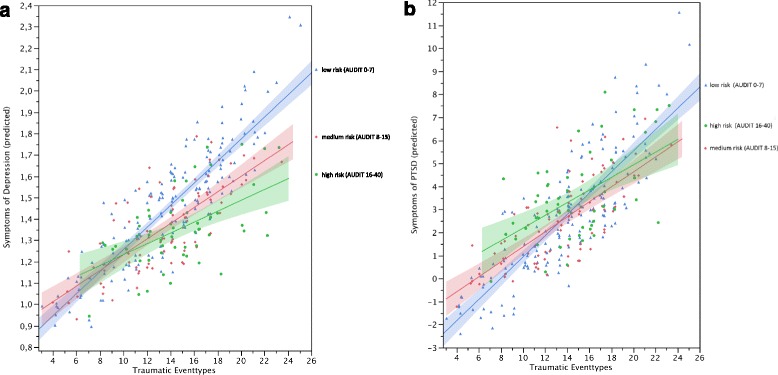Fig. 2.

Symptoms of depression (a) and PTSD (b) as a function of low (Risk Level I), medium (Risk Level II) and high-risk (Risk Levels III and IV) drinking and trauma exposure. For instance, a married, non-abducted man from the community Agweno, who has not completed primary education, is currently abstinent and with his age, trauma-exposure and childhood maltreatment in the family of origin set to the respective sample means has an estimated depression-score of 1.53, which is still below the most frequently used cutoff score for clinically relevant depression of 1.75 [104]. A 10 % increase of reported traumatic event-types for this man is associated with a 5.4 % increase in the estimated depression-score. The same man currently presenting at the threshold of dependent drinking (AUDIT-sumscore = 20) would have a significantly lower estimated depression-symptom-score of 1.37. A 10 % increase of reported traumatic event-types for him would be associated with significantly less increase in the estimated depression-score of 2.8 %
